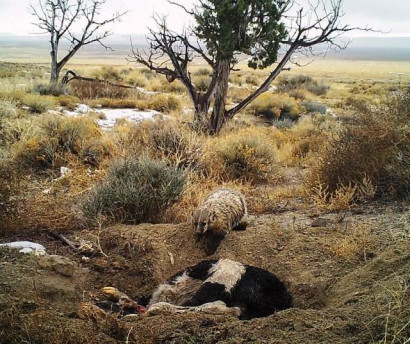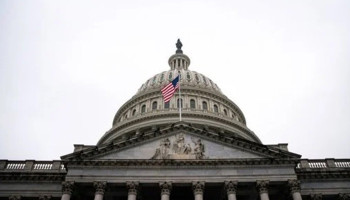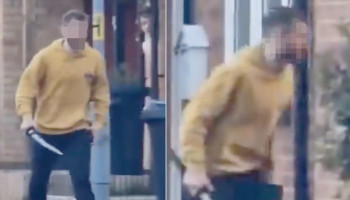A Badger Can Bury A Cow By Itself
 While studying scavenger behavior in Utah’s Great Basin Desert, University of Utah biologists observed an American badger do something that no other scientists had documented before: bury an entire calf carcass by itself. While badgers and their relatives are known to cache food stores, this is the first known instance of a badger burying an animal larger than itself. The finding suggests that badgers may have no limit to the size of animal they can cache, and that they may play an important role in sequestering large carcasses, which could benefit cattle ranchers in the West. The study is published in Western North American Naturalist. “We know a lot about badgers morphologically and genetically, but behaviorally there’s a lot of blank spaces that need to be filled,” says senior Ethan Frehner, first author on the paper documenting the badger behavior. “This is a substantial behavior that wasn’t at all known about.” The work was funded by a National Science Foundation Graduate Research Fellowship to doctoral candidate Evan Buechley.Scavenger bait The team didn’t originally intend to study badgers. In January 2016, Buechley set out seven calf carcasses in Utah’s Grassy Mountains, west of Salt Lake City. Each carcass was staked down and equipped with a camera trap to document what scavengers visited which carcasses. Buechley, who studies vultures and other avian scavengers, hoped to learn more about the ecology of scavengers in the Great Basin during the winter. Buechley went out to check on the carcasses after a week, and found that one was missing. “When I first got there I was bummed because it’s hard to get these carcasses, to haul them out and set them up,” he says. “I thought ‘Oh, well we’ve lost one after a week.’” He searched around the area, thinking that perhaps a coyote or mountain lion had dragged the carcass away, but after finding nothing, returned to the site and realized the ground where the carcass had been was disturbed. “Right on the spot I downloaded the photos,” he says, “We didn’t go out to study badgers specifically, but the badger declared itself to us.” Little was previously known about badger behavior, Frehner says. “They’re an enigmatic species. A substantial amount of their lifetime is spent either underground or a lot of nocturnal behavior, so it’s hard to directly observe that.” Camera traps, a relatively new tool for researchers, made it possible to observe more natural behaviors. In the photos, Buechley saw the badger dig around and beneath the carcass, which disappeared into the cavity created by the excavation. “Watching badgers undertake this massive excavation around and underneath is impressive,” Frehner says. “It’s a lot of excavation engineering they put into accomplishing this.” |

















